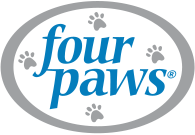Puppy Prep: Planning for a New Furry Family Member
Puppy Prep: Planning for Your New Furry Family Member
Just the phrase “new puppy” is enough to get anyone excited…so actually considering welcoming a furry family member into your home is a thrilling milestone! Amid the excitement, though, you will need to do some preparation to ensure your puppy’s transition into your household runs smoothly. From choosing a dog that best fits your lifestyle to investing in the right supplies, these are the most essential tasks for your puppy prep to-do list.
Choose a Dog to Match Your Lifestyle

Activity Level and Size
It’s important that your dog’s activity level and size correlate with your lifestyle. If you are looking for a jogging partner, you may want to opt for a breed known for its high energy and agility, such as those in the Sporting or Herding Groups. You should also consider the size of your living space and how large your pup will grow up to be. A spacious home and yard are ideal for larger dogs (but are not required, of course!).
On the other hand, if you prefer a dog who requires minimal physical activity and is small enough to curl up with you on the couch, consider a lapdog from the Toy Group. Because breeds from the Toy Group are on the smaller side, they are a great option if you live in an apartment or condo.
Grooming Needs
Furry friends have different dog coat types with varying grooming requirements. Therefore, you should research the upkeep of your desired breed’s coat. Do you have time in your schedule to frequently groom your pet, or would you rather have a dog whose coat doesn’t need as much attention? A short-coated breed typically requires far less grooming than a medium-coated breed.
Your Housemates
You must also consider your roommates or family to ensure your puppy will mesh well in your home. If you have children, you may want to find a good dog breed for kids who will be patient with your little ones.
Additionally, if you have another pet already in the family, you may want to discover which breeds are compatible with them. If you have a kitty, for example, research some dog breeds that get along well with cats.

Find a Veterinarian
Another aspect of puppy prep is finding a veterinarian before you welcome your dog home. Ask friends and family for referrals and check out different clinics to see how you like the environment and staff. Once you find a veterinarian you feel confident in, set up required appointments for your puppy’s checkups and vaccinations. This way, you will already be prepared once life with your new puppy begins!
Get a First-Aid Kit
Keep a first-aid kit on hand in case of a minor medical situation. While these items will provide peace of mind for unexpected events, it is recommended to consult or visit your veterinarian if your puppy is injured. Some necessary supplies for your dog include:
- Adhesive tape
- Bandages
- Antibacterial ointment
- Antidiarrheal medication
- Antihistamine medication
- Cotton balls
- Gauze pads
- Gloves
- Hydrogen peroxide (three percent)
- Scissors
- Thermometer (normal canine temperature: 100°F–102.5°F)
- Tweezers
Puppy-Proof Your Home

Place Dangerous Items Out of Reach
Dogs explore the world with their mouths, and homes are filled with small things that are easy to chew and swallow. Therefore, another way to prepare for your puppy is to puppy-proof your home and garden by stowing away or protecting anything potentially hazardous that’s within their reach. For instance, you can make electrical cords unattainable by stringing them through cord concealers. Especially ensure the following items are inaccessible to your dog:
Toxic Foods and Drinks
- Alcoholic drinks
- Apple seeds
- Caffeinated drinks
- Chocolate
- Grapes
- Macadamia nuts
- Mushrooms
- Onions
- Pits from peaches, plums, and cherries
- Raisins
- Any food containing xylitol (an artificial sweetener)
Toxic Plants
- Aloe vera
- Chives
- Crocuses
- Daffodils
- Eucalyptus trees
- Hydrangeas
- Ivy plants
- Lilies
- Poinsettias
- Rhubarb plants
- Shamrock plants
- Tulips
Ensure Your Home is Escape-Proof
Puppy-proofing also involves making sure your dog can’t escape the house. You and all members of your household should be extra mindful to close doors and avoid leaving windows wide open. When you do spend time outside with your pup, keep them supervised and secure them on a tie-out or leash. Of course, a fence around the yard offers added safety!
Gather Essential Supplies
Gate or Exercise Pen: Dog gates provide your pup the freedom to roam in a safe space while preventing them from venturing into off-limits rooms or stairs. If you don’t have a room that works well for this purpose, consider setting up an exercise pen.
Bedding: Dog beds come in a wide variety of styles, from orthopedic foam to soft, loosely padded pillows. A good option is a bed with a removable, machine-washable cover.
Collar and Leash: Your dog needs a collar or dog harness and an accompanying leash to secure them while on walks. You should be able to place two fingers under your pup’s collar; this will indicate it’s a comfortable fit. A standard leash is a good option for puppies as it allows more control than a retractable one.
Crate: Your dog’s crate is their place of peace and solitude. Make sure you get a well-ventilated crate that’s just big enough for them to stand, lay down, and turn around.
Bowls: Your puppy will need both a food and water bowl. Your most practical options are sturdy, dishwasher-safe, stainless-steel bowls.
Potty Pads: Wee-Wee® Pads provide a reliable potty spot and teach your dog to “go” in a desired area, easing the housebreaking process.
Grooming Supplies: The sooner you begin grooming your puppy, the more comfortable they’ll become with the process. Regular grooming will keep your pup’s coat, skin, hair, and nails healthy. Not to mention, it’s a great way to help strengthen the bond you share!
Identification: An identification tag engraved with your dog’s name, home address, and phone number is an important addition to your pup’s collar in case they get lost. Plus, microchipping your dog is a permanent way for shelters and veterinarians to identify your puppy and get in touch with you.
Chew Toys: Puppy chew toys help prevent destructive chewing habits and relieve discomfort during the teething process. Plus, they keep dogs busy and happy!

Make Time for Your Pup
Once you establish when you will welcome home your new pup, try to clear your schedule so you can spend as much time with them as possible. This will be crucial for bonding and will help your best friend feel comfortable around you. Plus, it’s never too soon to start establishing a routine for both you and your dog!
If it’s not possible for you to spend much time with your pup, you may need to find a trusted pet sitter, dog walker, family member, neighbor, or doggy daycare to help you out.

Perks of Pet Parenting
We covered the basics of what to do before getting a puppy and the next step is finally welcoming home your new little furry friend. Though there is plenty of puppy prep involved, being a pet parent is one of the most rewarding feelings. We wish you the best of luck with your pooch!










